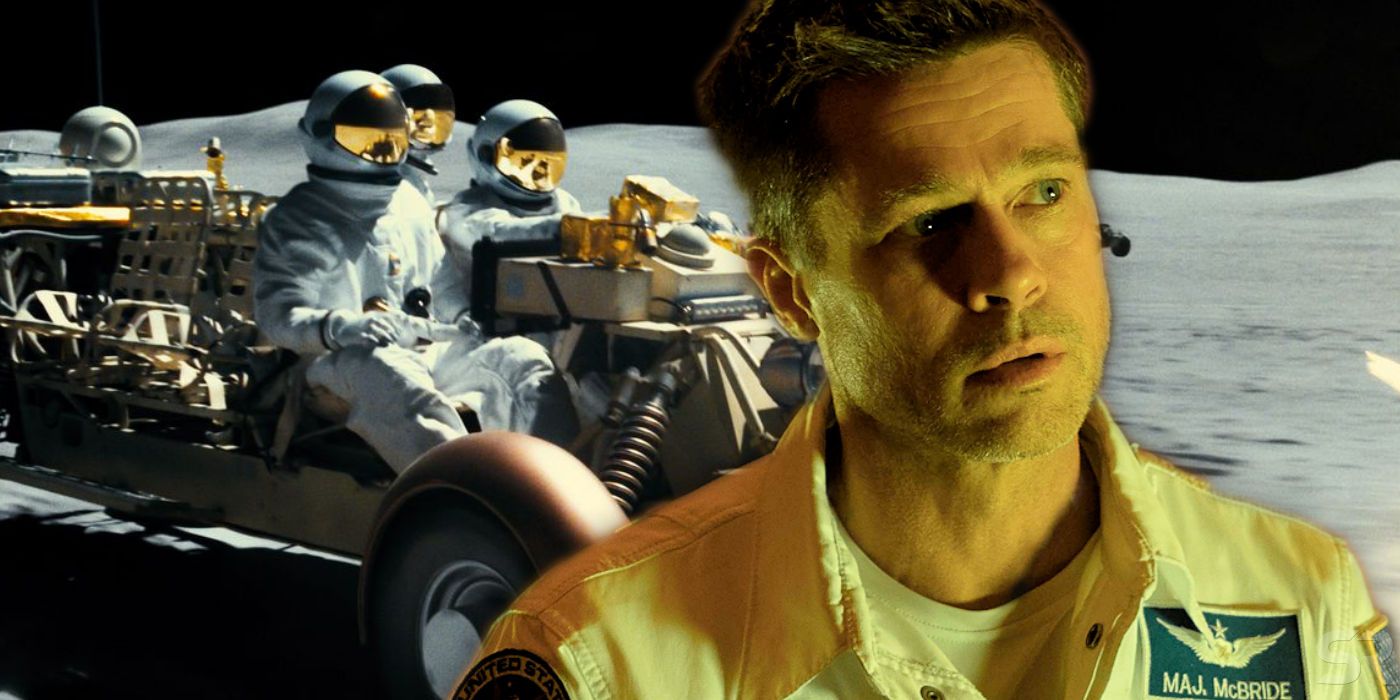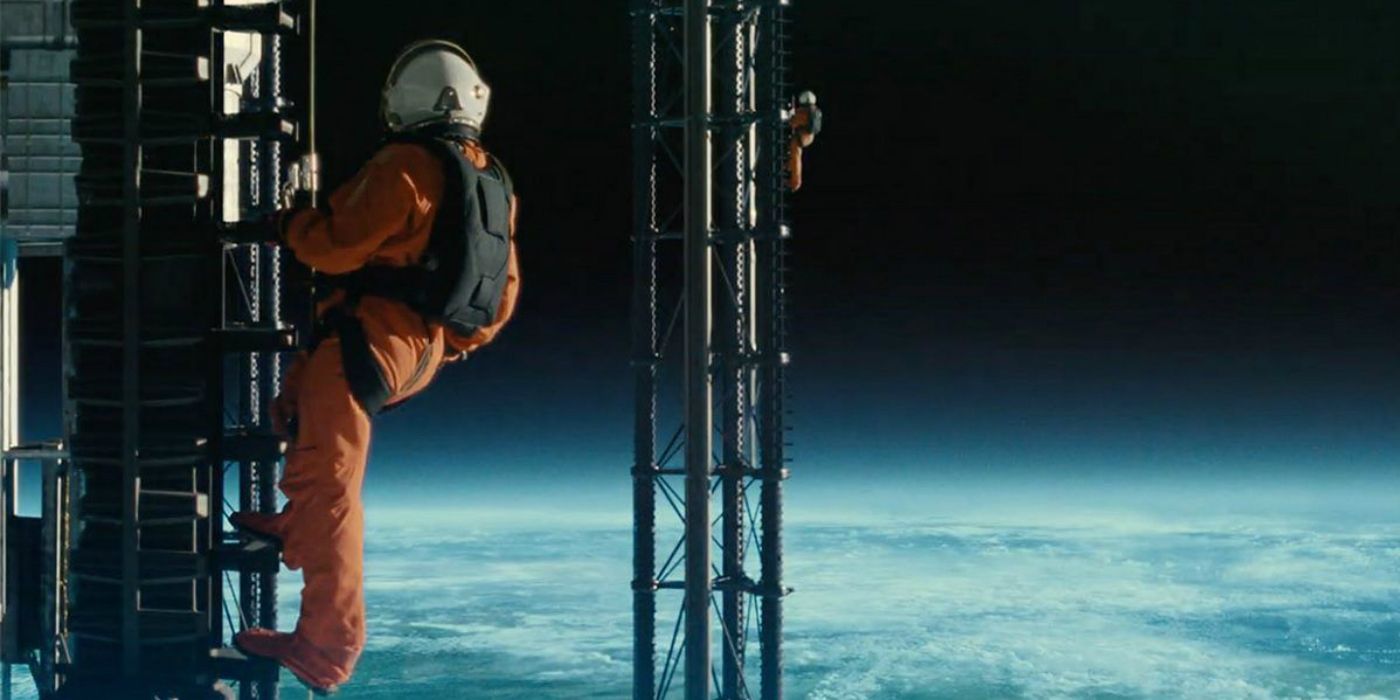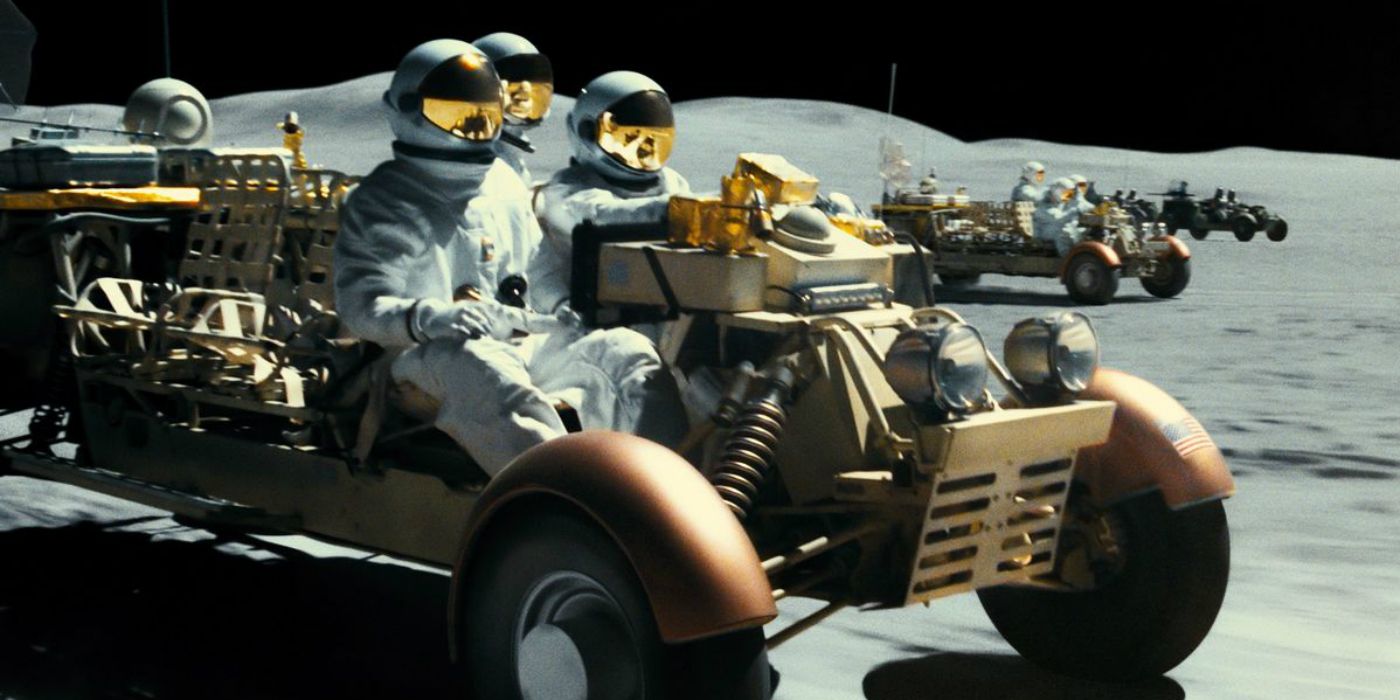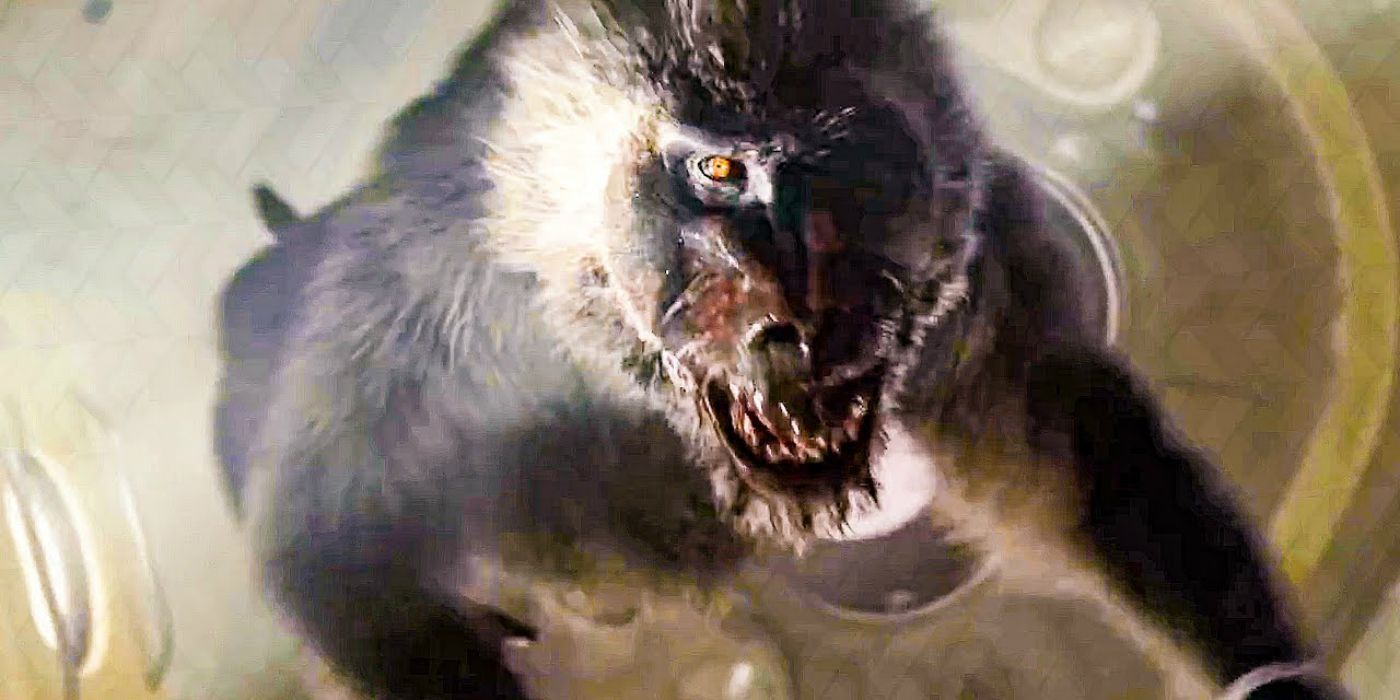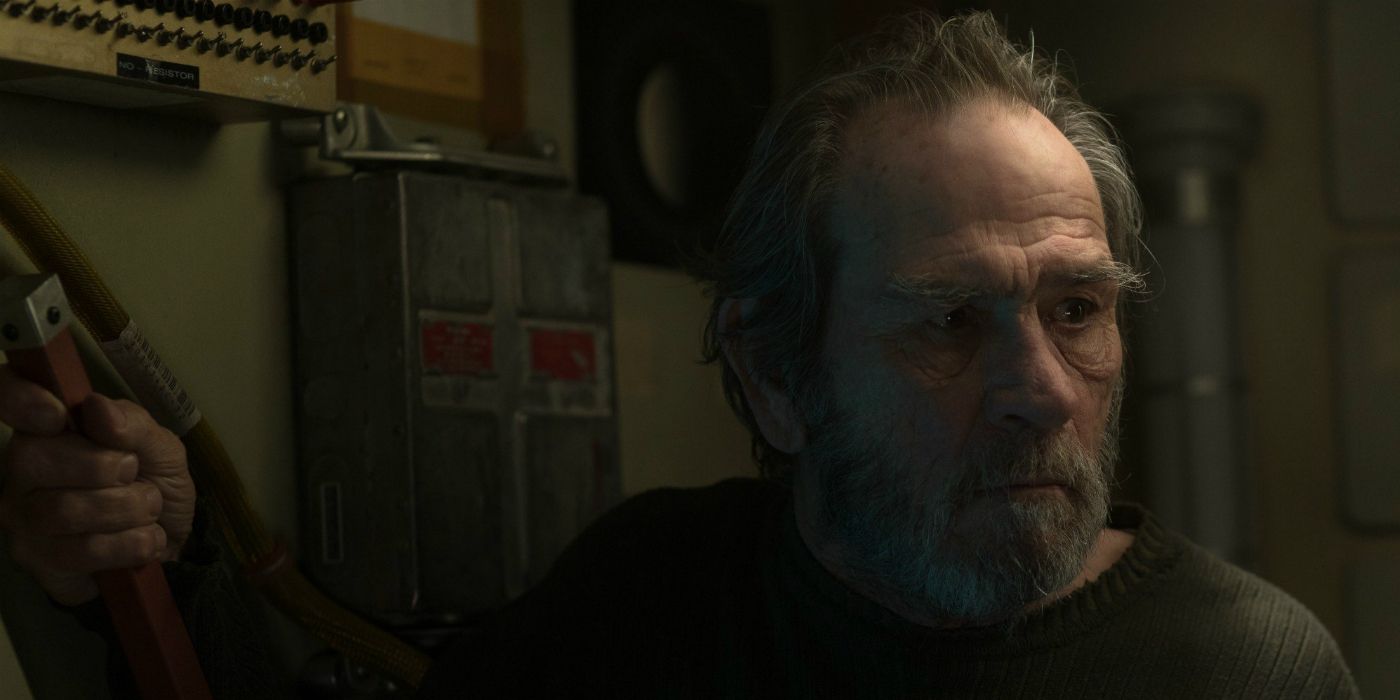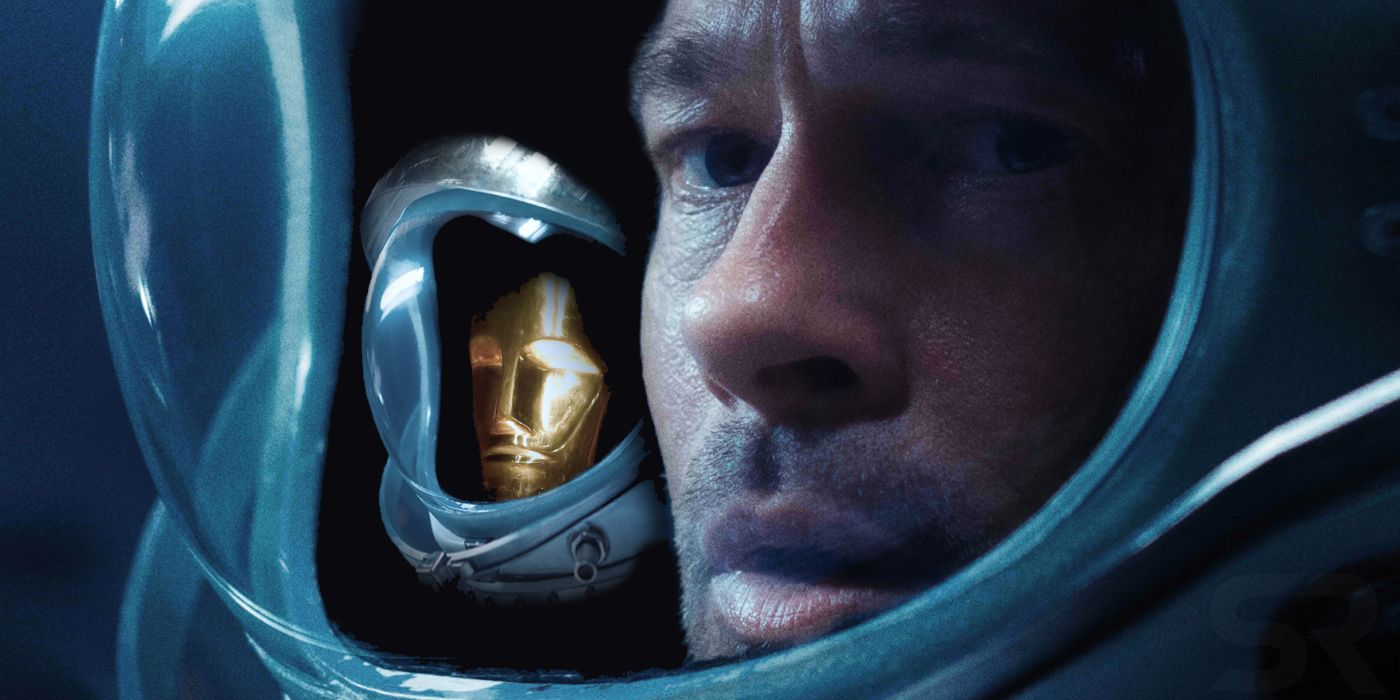Brad Pitt stars in the latest cerebral sci-fi film, Ad Astra - but how scientifically accurate is it? Director James Gray and his production team have put in a tremendous amount of effort with Ad Astra, aiming to create one of the most realistic science fiction movies ever made. They've paid particular care with the aesthetics and costume design, avoiding the traditionally "sexy" spacecraft in sci-fi in favor of a utilitarian look where every lever and button had a function. Although astronaut uniforms are futuristic, they're carefully designed to feel as though they're just one small step beyond present-day suits.
NASA actually reviewed a copy of the script during production, and gave feedback on the science. In an official press release, Bert Ulrich - NASA's liaison for film and TV collaborations - noted that they even provided some of the footage of the Moon and Mars. "Sci-fi films like Ad Astra, the Martian, Interstellar, and Gravity take movie audiences out of this world incorporating some of NASA’s most inspirational photography and footage," he noted proudly in an official NASA statement.
The set designs and costumes may have been remarkably realistic, but the overarching plot has a lot of scientific problems. The pulse itself is scientific nonsense, for all it drives the plot, but to be fair it's based on science beyond the present day. But as Ad Astra continues, it becomes increasingly inaccurate, and that realistic sci-fi becomes one of the strangest films in the genre.
Can You Freefall From The International Space Antenna?
Ad Astra opens with Brad Pitt's character, Roy McBride, performing an unexpected free-fall from the International Space Antenna. This is clearly situated on a modified version of the International Space Station, which orbits at an average height of 240 miles above the surface of the Earth, so it makes McBride's survival pretty remarkable. The world record for the highest parachute jump is held by Google Senior VP, Computer Scientist, Alan Eustace. He jumped from a height of just 25 miles, and had to wear a specially-designed, fully pressurized pressure suit. Presumably Roy is supposed to be wearing something similar, albeit dramatically improved.
Some viewers have complained that Roy should have burnt up in re-entry due to friction from falling, but Ad Astra is actually fairly accurate in this regard. In reality, objects entering our atmosphere burn up because their speed generates a pressure wave, which ionizes the air around them. This generates a shroud of superheated plasma. Roy was fortunate; he must not have built up enough velocity before he hit the atmosphere, meaning he had a chance of survival. Notice that, as he became aware of what was happening, Roy began to spread his arms in an attempt to slow his descent, and timed the parachute release carefully.
Why Can't Earth Transmit To Neptune?
Roy is soon told that he must head to Mars in order to send a message to his father, who's believed to be out near Neptune. This is one of the most curious problems with Ad Astra, though, because the film doesn't explain why a signal can't be sent straight from Earth. Presumably the script was intended to imply that communication systems across the Solar System had been too badly damaged by the energy surge; that would explain why Space Force's commanders feel the need to explain that the underground Martian installation was the only one they have to be undamaged.
Simulating The Lunar Environment
Ad Astra features a superb action sequence set on the Moon, and James Gray has done a sterling job making the whole sequence as scientifically accurate as possible. The scene was shot in the Mojave Desert, a harsh and arid environment that NASA really do use to train their astronauts because of its similarities with the Moon's surface. Cinematographer Hoyte Van Hoytema used one regular camera and one infrared, explaining to Variety that the infrared camera "brings in pure black skies and very bright overexposed highlights that turn the desert ground into a white and high-contrast look that's similar to the moon." VFX combined the two shots to seamlessly blend the colors. Even the guns obey the laws of physics; there are vague sounds, reflecting both the Moon's atmosphere and the fact the sound waves would also travel through the arm of the person holding the gun.
Why Are There Monkeys In Space?
A side-mission goes horrifically wrong when Roy discovers primates have broken out on a research ship. In the real world, there's substantial interest in how long-term exposure to space would affect living creatures, and it's not inconceivable that similar experiments could still be being conducted in McBride's time. Primates are near enough to human that they're often used in experiments to simulate an environment's effect on humans. These creatures probably aren't particularly healthy; their bodies will have been flooded with cosmic radiation, and the weightless environment has a particularly harsh effect on the eyes, which explains why one primate only reacted to Roy when it heard him.
Climbing Up A Rocket's Exhaust
One of the strangest sequences in Ad Astra sees Roy escape the Mars base and steal aboard the spaceship that's headed to Neptune to find his father. He gets on board by climbing up the rocket thruster - at the very moment it's firing. Where some of Ad Astra's science is realistic, here it pretty much breaks down completely; leaving aside the incredible heat, the sound waves would have been transmitted through even the thin Martian atmosphere, and they'd have pulverized Roy's body. There's absolutely no way Roy McBride would have survived this.
Roy's Father Has Cataracts
When Roy finally reaches his father, Clifford McBride, he finds he's just a shell of the man he knew. Clifford has suffered psychologically from the experience of isolation in space, but he's also suffered physically, with cataracts. Interestingly, NASA has indeed noted that many of their astronauts seem prone to cataracts; it's unclear why, but it may be something to do with the way the lack of gravity affects moisture in the eyes.
Would Roy McBride Have Gotten Through Neptune's Rings?
Roy McBride is certainly inventive; he figures a smart way to get back to his spaceship from the Lima Project, by tugging a chunk of shielding off of the space station and jumping through the rings of Neptune! In reality, this approach wouldn't have worked. Dr. Nicolas Lee, a research engineer in Stanford University's department of aeronautics and astronautics, explained to Esquire that the ring's particles would have easily cut through the metal Roy plate Roy was using. He pointed to the Cassini probe, which headed through the rings of Saturn, and reported impacts with the force of a rifle bullet. "If [Roy] had something like a sixteenth-inch sheet of metal—that's about one and a half millimeters—he could probably get hit by a half millimeter particle and it would punch through." It's also worth noting that, in a zero-gravity environment, the kinetic energy of every impact would have pushed Roy McBride back. As CBR observed, this sequence confirmed that - for all the attempt at realism - Ad Astra became the most ridiculous sci-fi ever.
Surviving The Journey Back To Earth
Roy McBride uses the destruction of the Lima Project as a way to get back to Earth, with his rocket propelled by the energy wave. Let's ignore the physics, which seem impossible but are to do with a matter/antimatter reaction that can't possibly be simulated by modern science. The most disturbing thing is that Ad Astra implied Roy had been unconscious for the entire journey home, only regaining consciousness when his rocket hit Earth's atmosphere. His body would have been fine; the film already established that astronauts plugged into nourishment tubes and TENS-like machines to prevent muscles atrophying. But the protracted period of unconsciousness signifies extreme brain damage, and there would have been significant medical consequences from this. Ad Astra ignores this completely.

